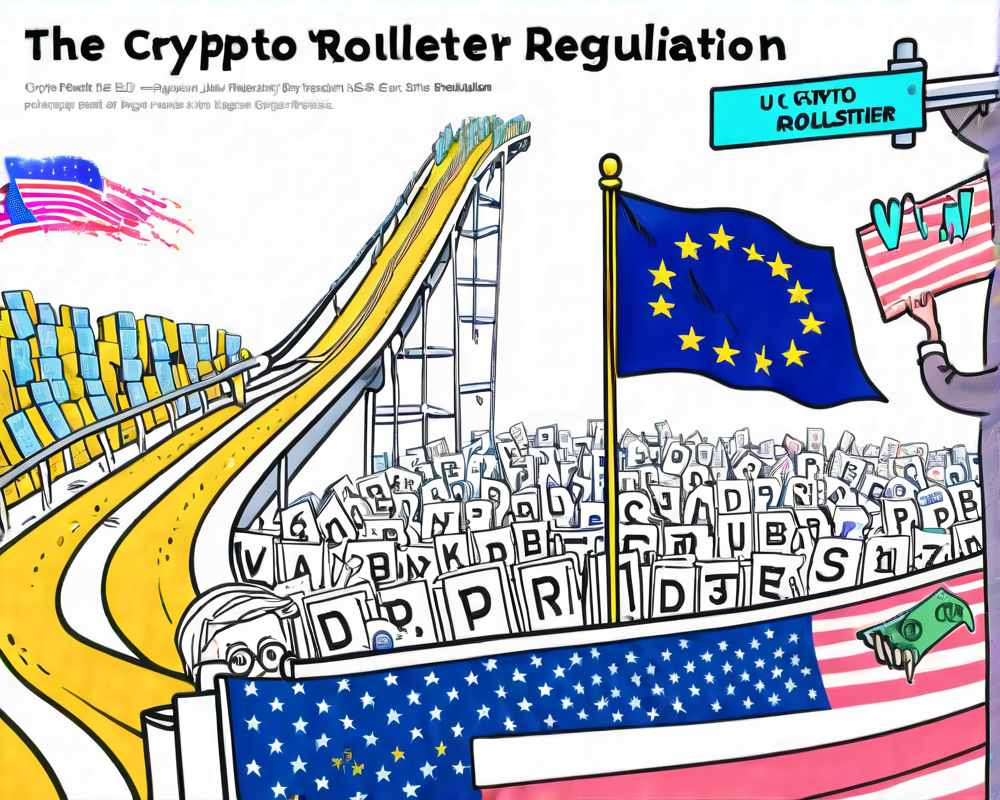The Evolving Regulatory Landscape
Get ready to adjust your regulatory sunglasses because come January 2020, the European Union is set for a major crypto makeover. Forget the wild, wild west of the past decade; the EU is officially stepping into compliance territory. This shake-up will touch every player in the game from crypto custodians to fiat-crypto exchange services, marking a new era for digital currencies across the sea.
A Little Backstory
The EU’s recent embrace of cryptocurrency regulation isn’t just a sudden whim. With the introduction of the EU Fifth Anti-Money Laundering Directive (5AMLD) back in July 2018, the realm of crypto businesses has changed dramatically. Before this directive, crypto was pretty much the rebellious teen that didn’t want to abide by the rules. But with the deadline for member states to weave this legislation into national laws approaching, those carefree days are numbered.
The U.S. Story
Meanwhile, the U.S. has been dealing with its own cryptocurrency drama since 2013 when the Financial Crimes Enforcement Network (FinCEN) first threw a regulatory lifebuoy to the industry’s early players. The U.S. model? Well, it’s a hairier and more complicated beast than the EU’s streamlined approach. Think multiple layers of regulation like a well-structured lasagna—federal on one layer, state on another. Delicious, if you like your legal frameworks with extra cheese.
Common Threads Between EU and U.S. Regulations
Despite the differences in approach, both entities seem to inhabit the same regulatory universe when it comes to fighting financial mischief.
- Anti-Money Laundering (AML): Both jurisdictions emphasize the necessity of monitoring currency flow to combat money laundering and terrorism financing.
- Customer Monitoring: Expect both the EU and the U.S. to mandate KYC (Know Your Customer) policies for crypto service providers to keep tabs on transactions.
- Flexible Compliance Measures: Surprisingly, both regions allow states (or member states) to impose stricter regulations as they see fit. So, watch out for stricter policies if you’re in a particularly vigilant jurisdiction!
Key Differences: The Devil Is in the Details
While there’s common ground, the differences can be likened to comparing apples and oranges. Let’s dig into some of those juicy disparities:
- Definitions: In the EU, crypto service providers sit cozy under the title of ‘obliged entities’, while in the U.S., they fall under ‘covered financial institutions.’ Technical but important—these definitions set the tone for compliance.
- Focus of Regulation: The 5AMLD in the EU is like a bespoke suit tailored to cover custodian wallets and crypto-to-fiat exchanges. Meanwhile, the U.S. regulation is looser, encompassing a broader spectrum.
- Compliance Levels: The U.S. is a two-tier system, requiring providers to juggle compliance at both federal and state levels. The EU marches a little more uniformly under 5AMLD, essentially centralizing its compliance standards.
- Data Protection: The EU’s General Data Protection Regulation (GDPR) adds a sprinkle of oversight to data collection, while the U.S. is still figuring out its approach to consumer privacy.
Beneficial Ownership and Customer Diligence
Beneficial ownership requirements are giving many compliance officers headaches on both sides of the pond. In the EU, beneficial ownership info is a must for obligated entities. This is akin to a nosey neighbor asking to see your house papers—a bit intrusive, but necessary.
Comparatively, the U.S. Customer Due Diligence (CDD) rule plays peacemaker, but it doesn’t directly govern crypto service providers. However, many embrace it as a guiding light toward compliance.
Lessons from the U.S. Experience
What can the EU glean from the U.S. journey through cryptocurrency regulation? For starters, it’s all about patience and strategic groundwork. The U.S. has benefited from its early bird status, showing that while regulation can feel like a pain, it ultimately fosters safety and reliability within the crypto sphere.
As the EU takes its next steps, we can expect greater adoption of cryptos across the continent—hopefully without the regulatory whiplash that came before. Individual member states may still dance to their own tune, allowing some variance in how tightly they sew up crypto regulations. So, buckle in; the regulatory rollercoaster is just beginning!




